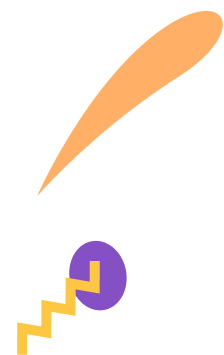In this guide, learn what speech marks are and take a look at some examples!

Author
Eliana Sk
Published
April 14, 2022


In this guide, learn what speech marks are and take a look at some examples!

Author
Jane Doe
Published
April 14, 2022




Learn what speech marks are and take a look at some examples!

Author
Eliana Doe
Published
April 14, 2022


Key takeaways
From novels to news reports, speech marks are used in all sorts of places! In this guide, we take a look at what they are, where they’re used and some handy rules to keep in mind when using them.
Speech marks are special punctuation marks that show the exact words someone has spoken.
They’re also known as quotation marks and inverted commas, and they always appear in pairs at the beginning and end of what was said.
This is what they look like: “ ”
And here’s an example of some speech marks in action:
“The words that appear between speech marks are the exact words that someone has said,” said the teacher.
You can find speech marks everywhere. They’re common in stories, news articles, poetry and essays. By showing when someone is speaking, speech marks can help make a text more lively and easier to read.
In a story, speech marks may show which of the characters is speaking. For example, in a children’s book you may read:
“We always eat in the garden,” said Markus.
In a news article, speech marks can be used to show a statement made by an expert. For example:
Economists say that “the increase in production will help the job market to grow”.
Get 1 FREE month of Doodle!
Use code AUTUMN_2025 to enjoy unlimited questions and games
Unlock unlimited English questions
Put your learning into practice with fun exercises + games that are proven to boost ability!
DoodleEnglish is an award-winning app that’s filled with thousands of questions and games exploring spelling, grammar and punctuation!
Designed by teachers, it creates each child a unique work programme tailored to their needs, boosting their skills with just 10 minutes of use a day.* Try it free!

*Based on earning 10 stars a day in DoodleEnglish. Read full study

Children usually start learning about speech marks around the age of 7.
Before they learn about speech marks, they’ll first be taught about other forms of punctuation, including full stops, commas, exclamation marks and question marks.
Being able to tell the difference between direct and indirect speech will help children to effectively use speech marks.
You should always separate direct speech from the reporting clause by a comma.
This may sound a little complicated, but if we look at an example it will all be clearer.
Anne said, “It’s snowing!”
In this example, ‘Anne said’ is the reporting clause, as it lets us know that it was Anne who spoke. This clause is separated by a comma from Anne’s direct speech, which is represented by the text between the speech marks (“It’s snowing!”).
If you’re writing a conversation between multiple people, reporting clauses can also help to clarify who’s speaking, and when.
Let’s take a look at some examples of speech marks in actions. These will help us better understand the different uses of speech marks.
Example 1
The teacher said that Anthony’s story was “exceptionally written” and that’s why she read it to the whole class.
In this example, a fragmented part of the teacher’s statement is quoted. This is why the statement isn’t capitalised and has no punctuation before or within the quotation marks.
Example 2
Markus laughed, “Did you see how high I jumped?”
“I know! It was amazing!” Adriana agreed.
In this example, two different people are speaking. The reporting clauses (‘Marcus laughed’ and ‘Adriana agreed’) shows us who is speaking. Each speaker is also placed on a new line to help the reader see that a new person has started speaking.
Example 3
“It’s amazing,” William exclaimed, “there are bubbles everywhere!”
In this example, the statement made by William is separated by the reporting clause. This is a fun way of adding some character to your writing when using speech marks.
Example 4
“Polar bears are my favourite real animals,” Mario said. He then told us about the mythical animals he likes more than polar bears.
This is an interesting example because only part of what Mario said is directly written down. The rest is summarised in indirect speech, and this is why there are no speech marks in the second sentence.
If you’d like to quote a phrase or statement, using speech marks will show the reader that these aren’t your original words.
Speech marks are also a great way to give emphasis to certain phrases.
If you’re writing stories, they’ll also help to separate when the different characters are talking. Keep in mind that speech is a faster way of moving a story forward, so be careful about how much you use them!
There are a few helpful rules to keep in mind when using speech marks:
Using speech marks is relatively easy once you realise they’re only used to express what someone said. When writing an essay or story, speech marks can also help to make your writing more interesting and lively!
To learn even more about speech marks, why not download the DoodleEnglish app?
It’s filled with interactive exercises exploring the topic, making it the perfect way to put your learning into practice.
Best of all, it’s designed to be used for just 10 minutes a day — and you can try it for absolutely free!
Speech marks are punctuation marks that show the words someone has spoken. They’re also known as quotation marks and inverted commas.
You should always separate direct speech from the reporting clause by a comma.
If we look at an example: Peter said, “It’s raining!”
‘Peter said’ is a reporting clause, as it lets us know that it was Peter who spoke.
This clause is separated by a comma from Peter’s direct speech, which is represented by the text between the speech marks (“It’s raining!”).
You should use speech marks each time someone speaks.
Speech marks are also called ‘inverted commas’.
This is what they look like: “ ”
You should use inverted commas whenever someone speaks in your writing.
Single speech marks (‘ ‘) can be used to replace double quotation marks (” “) when they’re inside of double quotation marks.
Book a chat with our team
If you’d like to use Doodle’s browser version, please visit this page on a desktop.
To log in to Doodle on this device, you can do so through our apps. You can find out how to download them here: